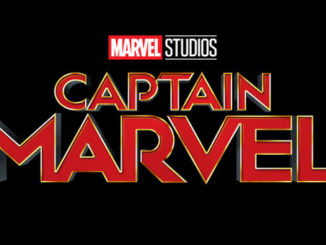 If there is one constant in Hollywood, it’s that money gets things done. So, if we want some idea where Hollywood is going in the future, we have to look at the highest grossing films of 2019. What secrets do they hold? What truths do they tell? Let’s find out.
If there is one constant in Hollywood, it’s that money gets things done. So, if we want some idea where Hollywood is going in the future, we have to look at the highest grossing films of 2019. What secrets do they hold? What truths do they tell? Let’s find out.
Below is the list of the top ten domestic grossing films of 2019, courtesy of Box Office Mojo (captured on 12/31/19):
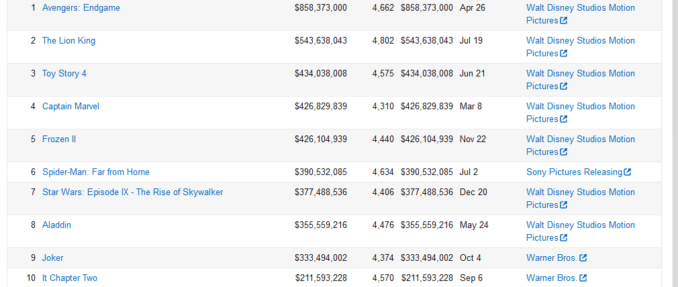 So, what does this tell us?
So, what does this tell us?
1. Disney’s domination might soon become problematic to other studios
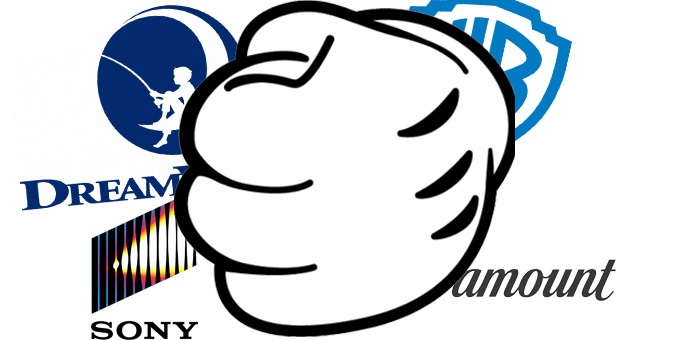 I first started noticing Disney’s domination of the domestic box office in 2015, when the studio had a whopping 4 films in the domestic top ten. Now, four years later, Disney has a hand in eight out of the ten (Seven it put out in-house, and its Marvel Studios having a hand in Spider-Man: Far From Home). How long until it has all ten spots wrapped up?
I first started noticing Disney’s domination of the domestic box office in 2015, when the studio had a whopping 4 films in the domestic top ten. Now, four years later, Disney has a hand in eight out of the ten (Seven it put out in-house, and its Marvel Studios having a hand in Spider-Man: Far From Home). How long until it has all ten spots wrapped up?
I’m sure that there are a lot of studio chiefs in Hollywood asking that very question. And I bet a follow up is what are they supposed to do if that does happen?
With Disney and its subsidiaries gobbling up most of the profits, the other studios are fighting over scraps as it stands now. If Disney takes over even more market share, what will they do? How will they survive?
Warner Brothers seems to be in the best shape, having a great reserve of IP to choose from for its franchises. But the other studios? Will they buy out a toy manufacturer or comic book company to gain access to their IP? Merge with one another? Go out of business? We shall see.
Or maybe just wait for Disney’s dominance to loosen up because…
2. STAR WARS is at a crossroads…
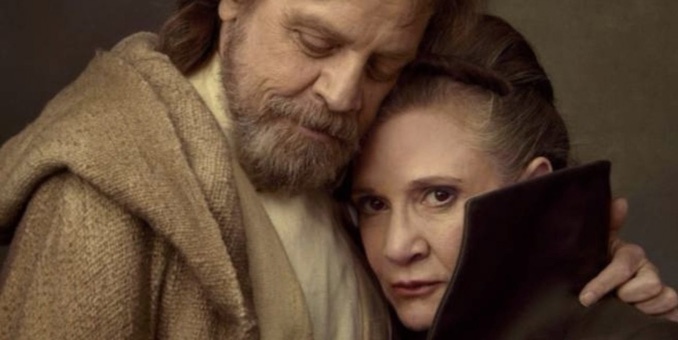 The Rise of Skywalker was presented as the end of the Skywalker saga, a series of 9 to 12 films (depending on whether or not you are willing to accept anthology or animated films into the saga) with only 3 and 1/2 fans really liked, depending on who you ask. But while you will be hard pressed to find a Star Wars fan who won’t go on, in detail, about which installment he hated, all the films made a bucket load of money.
The Rise of Skywalker was presented as the end of the Skywalker saga, a series of 9 to 12 films (depending on whether or not you are willing to accept anthology or animated films into the saga) with only 3 and 1/2 fans really liked, depending on who you ask. But while you will be hard pressed to find a Star Wars fan who won’t go on, in detail, about which installment he hated, all the films made a bucket load of money.
Now, nobody expects Disney to allow their $4 billion investment to go fallow, especially one that has made as much money for the studio as Star Wars has. There will be other Star Wars films. Heck, SW:TROS even set up a couple potential spin-offs in its final frames. But it appears that films focusing on Luke and Leia, Darth Vader and Anakin Skywalker are at an end.
Those were the big draws of the franchise. Solo: A Star Wars Story shows that other popular characters might not be popular enough to spin-off into their own hit films (with the caveat that there was a lot going on behind the scenes to cause that to flop). And while Disney+’s The Mandalorian shows that you can make a popular series out of fringe character in the universe, there’s no guarantee that an original concept set in universe would work on film. There is a lot of uncertainty. Can Disney craft a saga as good as Luke, Leia and Vader’s? And if they do, will fans accept it?
3. …and so is the MCU
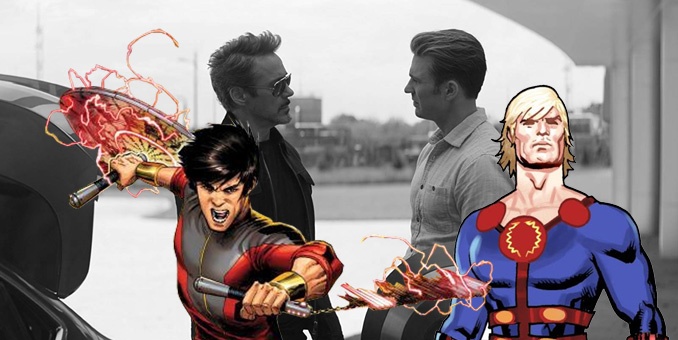 Speaking of uncertainty, let’s talk about the Marvel Cinematic Universe. Avengers: Endgame was a fitting title for that film, as it not only wrapped up ten years of the Marvel Studios films but also marked the end of seeing Robert Downey Jr’s Iron Man and Chris Evans Captain America on the big screen. There was an air of finality and rebirth that was created by that film, one that brings up an uncertain future.
Speaking of uncertainty, let’s talk about the Marvel Cinematic Universe. Avengers: Endgame was a fitting title for that film, as it not only wrapped up ten years of the Marvel Studios films but also marked the end of seeing Robert Downey Jr’s Iron Man and Chris Evans Captain America on the big screen. There was an air of finality and rebirth that was created by that film, one that brings up an uncertain future.
Yes, there are sequels to Doctor Strange, Thor, and Black Panther on the schedule, with sequels to Guardians of the Galaxy and Captain Marvel in the works and Black Widow finally getting a film of her own. All of those should do well. But new additions to the MCU film universe might have a tougher road to success.
If Iron Man and Captain America were B-List comic book characters, and Black Panther and Captain Marvel were C-list, we are solidly in the D-list tier now. Because, unlike their predecessors, Eternals and Shang-Chi do not have a long, uninterrupted series runs in the comics and have not appeared in Marvel cartoons or TV shows. In other words, they are fringe comic book characters that most normal people do not know who they are.
Now, Marvel Studios has is currently in a do-no-wrong mode, and should bring these properties and more to the big screen successfully. But if they are going to falter, the faltering will begin here.
4. Sony would be insane to break up with Marvel Studios

One A-list hero Marvel Studios recently got access back to was Spider-Man, but visitation rights were almost rescinded. Millions of fanboys and fangirls went into various degrees of panic when it was announced that Sony and Marvel Studios couldn’t agree on a contract to keep their partnership growing. Luckily, the break-up was only temporary and the pair reunited soon after, but still, it was a cause of concern.
On one hand, Sony had the most sweet of sweetheart deals in the original agreement of Marvel, keeping pretty much all of the profits from the joint effort. You can see how unwilling they’d be to give that up. You can also see why Marvel would want to have a bigger stake in the profits for all their hard work.
On the other hand, the current version of Spidey is one of the most popular they’ve ever seen. And the main reason for that is the character’s ties to the MCU. You take that away and the struggles Sony had bringing the character to the screen return. Sony needs to ask itself, is it better to have 50% of a billion dollar profit, or all of the profits from a $600 million underperformer.
5. STAR WARS Kills CATS
 Every so often, studios release films on the same day as something that will be a hit as a form of counterprogramming, hoping that moviegoers who are not a fan of the hit franchise or can’t get into the theater will choose their film instead. The most famous example of this is Honey, I Shrunk the Kids being released the same day as Batman in June of 1989 and becoming a sizable hit in the process. But this doesn’t always work out that way. For example: Cats vs. Star Wars: The Rise of Skywalker.
Every so often, studios release films on the same day as something that will be a hit as a form of counterprogramming, hoping that moviegoers who are not a fan of the hit franchise or can’t get into the theater will choose their film instead. The most famous example of this is Honey, I Shrunk the Kids being released the same day as Batman in June of 1989 and becoming a sizable hit in the process. But this doesn’t always work out that way. For example: Cats vs. Star Wars: The Rise of Skywalker.
Universal made a lot of incredibly stupid mistakes with Cats. To list a few: not realizing that the original musical was as equally reviled as it was revered, not paying attention to all the negative reaction to the actor’s CGI costumes, doing a sloppy job on the CGI in the first place, then releasing a horrible film that only added to the original work’s flaws instead of correcting them. But taking on Star Wars was its real death knell.
I’m sure Universal thought that it was a brilliant move to release the film as an alternative to ST:TROS as there was no way the respective fanbases would be the same. They were horrible wrong. The Star Wars films are so all inclusive that the crossover between Cats fans and Star Wars fans looked less like a Venn Diagram than a solar eclipse. And if there were fans of both, the fandom most likely tips more to the Dark Side (or Light Side, depending if you are a Jedi instead a Sith), meaning that ST:TROS was a film they HAD to see, and Cats was the film they could hold off on. When the terrible reviews from Cats came in, that hold became a permanent one.
The film might have stood a chance of gaining a little more money if the studio didn’t choose to release it the same weekend as the end of the Skywalker Saga. The curious might have come out to see if it was as bad as it seemed (reviews were embargoed for obvious reasons) if it had the opening weekend to itself. So going up against SW:TROS cost the film a lot of money. Maybe not enough to be a success, but probably a sizable sum.
There are a lot of lessons to learn from the abysmal failure of Cats. One of them should be let Star Wars have the weekend to itself.
6. Live Action Remakes of Disney Cartoons work…but only the first time around and with the big names
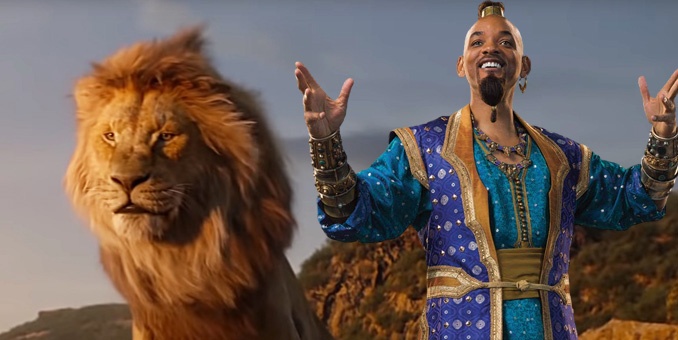 We have been tracking Disney’s success with their live-action remakes of their classic cartoons since our 2014 review, but certain rules on their success become clear.
We have been tracking Disney’s success with their live-action remakes of their classic cartoons since our 2014 review, but certain rules on their success become clear.
The live-action remake could still be a cash cow for the studio, if the original were suitably beloved. Disney’s Lion King and Aladdin remakes both landed in the top ten highest grosses this year, landing at #2 and #8 respectively.
However, not all remakes are a sure thing to bring in box office gold. Tim Burton’s Dumbo remake needed $500 million worldwide to break even and only earned $353 million worldwide, making it to only #22 on the year-end list.
What separated Lion King and Aladdin from Dumbo? Well, the originals of the first two are in the top five highest grossing conventionally animated films of all time. The original Dumbo couldn’t even break the top 50 on that same list. It might have been a favorite to a lot of Disney fans, but not enough to make it successful or deserving of a remake.
And another rule became clear, audience might be fickle in which live-action redo will get their support, they seem less willing to support a sequel to the live-action remake. Joining the flop Alice: Through the Looking Glass is the disappointing Malificent: Mistress of Evil. Whereas the former cost Disney almost $70 million, Mistress of Evil‘s $490 million worldwide gross was enough to break even but not make a profit.. Not as bad but still proof that Disney should stop making sequels from its live-action remakes..
7. There is room for sophisticated horror in the top grossers
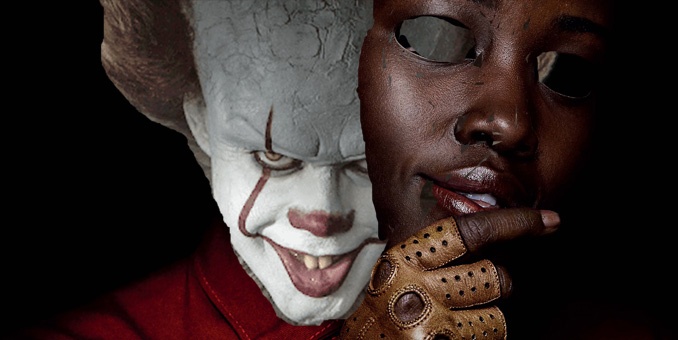 It Chapter Two clocked in at number ten. Us landed just a few spots outside of the top ten. This could mean something.
It Chapter Two clocked in at number ten. Us landed just a few spots outside of the top ten. This could mean something.
Horror trends are cyclical. Slasher movies are in. Then it’s Japanese horror remakes. Then its snarky Horror trope commentaries. Then true-life ghost stories. Then back to slashers again. And all it takes is one success to spawn a whole movement.
The two movies above follow in a trend of films like Get Out, Hereditary and It Chapter One that take a more serious approach to their horror, while keeping the down to Earth scares that make the genre popular. It is a bridging of two types of horror which, if played right could bring the genre more success than it ever had. It will be interesting to see if more filmmakers follow down this path.
8. JOKER shows a new way for DC/Warner’s, if they are smart enough to follow it
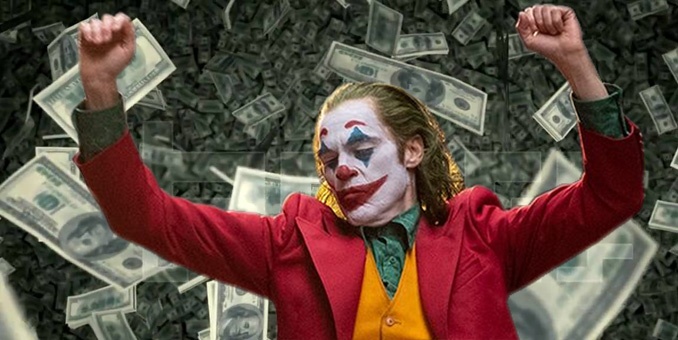 Todd Phillips’ Joker gave Warner Brothers something they have been looking toward to for years: a $1 billion worldwide gross from a DC Comics property. Now they have to figure out a way to translate this into continued success without screwing things up.
Todd Phillips’ Joker gave Warner Brothers something they have been looking toward to for years: a $1 billion worldwide gross from a DC Comics property. Now they have to figure out a way to translate this into continued success without screwing things up.
That might not be as easy as you might think. Warner Brothers has a unique tunnel vision towards its DC Comics films. Instead of looking at all the reasons why a DC Comics film succeeds, the focus in on one simple answer. The Nolan Batman films weren’t successful because they were directorial masterpieces that were well written and superbly acted that captured the spirit of the comics. No, in Warners eyes it was because it was dark, and the next thing we know a few films later we have Batman asking Superman if he bleeds.
For all its faults, Joker was an immersive experience, a completely crafted world that earned its R Rating. Call me a cynic, but I believe that the main take away many Warners executives will have from Joker‘s success is that if you throw a few F-bombs and bloody violence in a film that fans will come running. That is the kind of logic that keeps Warners from truly capitalizing on its DC Comics properties. If the studio goes the simple route instead of a more nuanced and serious examination, then the billion dollars Joker made will be worthless.
9. CAPTAIN MARVEL’s success shows once again that there is room for female action heroes in comic book films
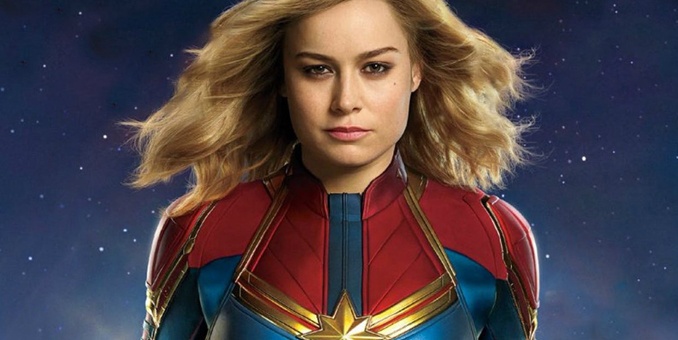 Back in the 2017 review, I crowed about Wonder Woman and how it proved female lead character can carry comic book films to big success. Give it to Marvel Studios to due DC one better.
Back in the 2017 review, I crowed about Wonder Woman and how it proved female lead character can carry comic book films to big success. Give it to Marvel Studios to due DC one better.
Captain Marvel is no Wonder Woman. For the longest time, Captain Marvel wasn’t even Captain Marvel. She was Carol Danvers, a supporting character in Marvel’s male Captain Marvel comic book. In 1977, after Wonder Woman had been around for over 35 years, appeared on the cover of Ms. magazine, and appeared on her own television show on CBS, Carol became Ms.Marvel, more a way to protect the copyright on the name than create a lasting character. While Wonder Woman starred in a comic book with her own name almost without interruption for decades, Ms. Marvel became Binary, then Warbird, then back to Ms. Marvel, bouncing from short-lived comic series to supporting roles in other books. While Wonder Woman became and international icon, Carol Danvers operated at the fringes of Marvel.
Lack of public knowledge was not the only obstacle in the way of the Captain Marvel film’s success. Her film faced a roadblock Wonder Woman never faced: a legion of butt-hurt fanboys who thought the lead actress was just a bit too feminist and decided to sabotage the film. Captain Marvel overcame all these obstacles to earn $300 million more worldwide than Wonder Woman.
This proves that audiences have no fear of female characters, known or unknown, and will come out to see them in droves. This must be reassuring for studios with comic book films comic out in 2020. Black Widow, Birds of Prey, Wonder Woman 1984 and even New Mutants and Eternals all have strong female characters as a focus. The ladies should continue to have an impact at the box office for years to come.
10. Disney has a two pronged CGI animated film attack that could go on forever
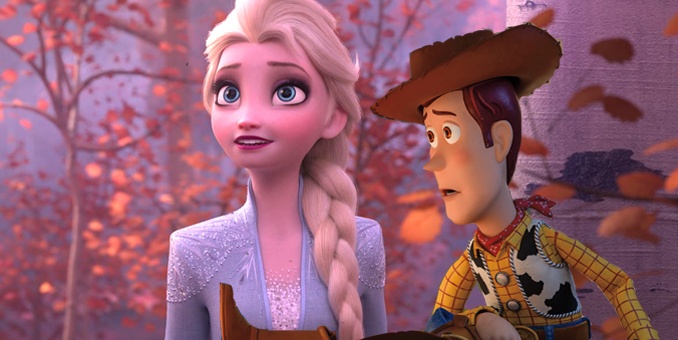 No matter what happens with their Star Wars and Marvel properties, Disney has two surefire moneymakers in their Pixar films and their in house Disney Animation. This has been proven over the years but this year shows that neither branch ever needs to come up with an original concept again to be a success.
No matter what happens with their Star Wars and Marvel properties, Disney has two surefire moneymakers in their Pixar films and their in house Disney Animation. This has been proven over the years but this year shows that neither branch ever needs to come up with an original concept again to be a success.
Both arms had a film in the top ten, each of them was a sequel. Pixar’s Toy Story 4 came in at #3 and Disney Animation’s Frozen II came in at #5–and that’s after only been released in November. Both sequels ended in ways that would appear to wrap up the franchise, but the last Toy Story seemed like it would have been the last Toy Story yet we still got a fourth installment. I’m sure there are people right now in Hollywood, thinking up ways that these franchises can go on.
Granted, these are arguably the top franchises of each sub-studio, but their success shows that Disney could just release sequels to these films every couple years and rake in millions. But add to them the hit originals both areas come out with on a regular basis, they’re a sure-fire cash generators that will work with out fail. So don’t expect Disney to fall out of the Top Ten Grossers just yet.




